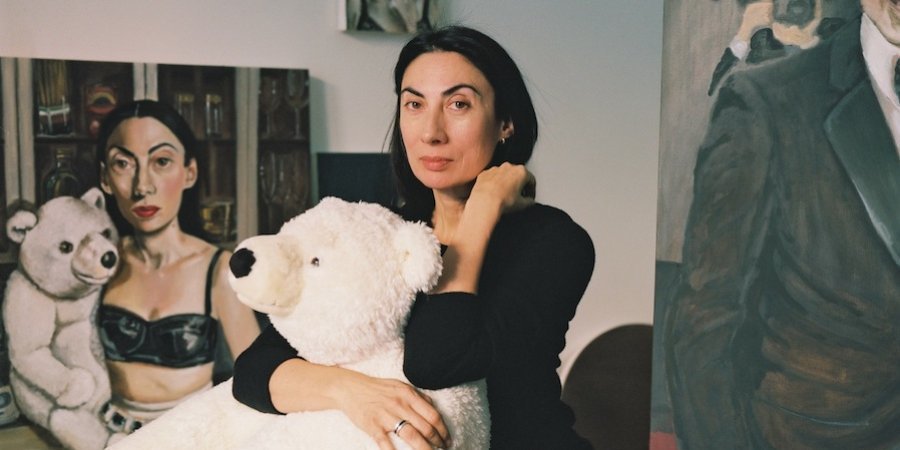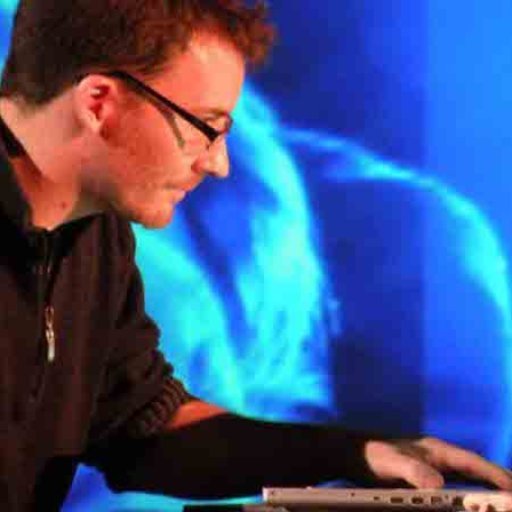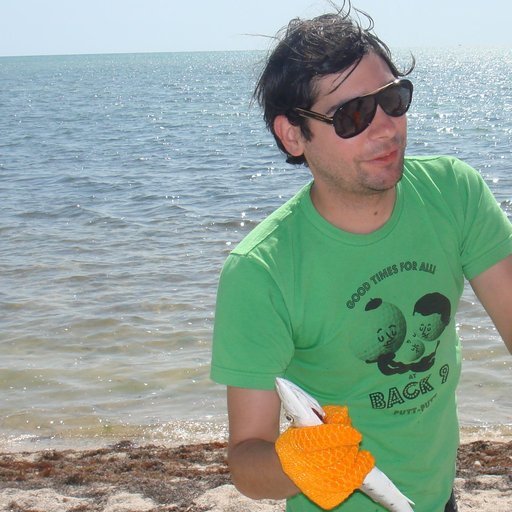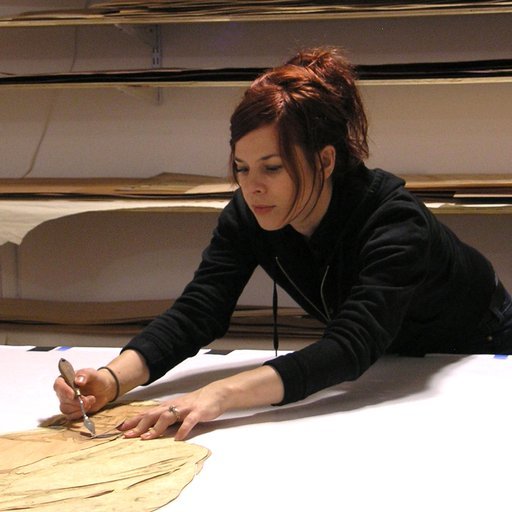Much is made these days of the intersection of art and fashion, and few people better embody the marriage of these two kindred disciplines than Anh Duong. An artist who taught herself to paint with her mother's art supplies while growing up in Bordeaux, France, Duong pursued a career in ballet before ascending to the international stage as a model for designers like Christian Lacroix and Diane von Furstenberg. After five years of jetting around the world for fashion events, she retired from modeling and devoted herself to art, specializing in raw, psychologically penetrating self-portraits that once led Vanity Fair to call her "the Frida Kahlo of the 21st century."
This month saw the opening of a new show of Duong's paintings at London's Robilant & Voena gallery called "Can You See Me." We spoke to her about the new body of work, the relationship between painting and modeling, and what she hopes viewers get out of her arresting portraits.
What is the theme of your new show, and where did you find inspiration for the works?
Most of my work is about relationships—my relationship with myself, with others, with the world, and, by implication, the relationship that women have with their own self-image. For the first time I am also showing still-lifes, which I consider to be a form of self-portraiture as well.
Can you talk a little bit about your painting process? It's rather unique, in that you use a true mirror—a contraption that employs two crossing reflective planes—to create your signature self-portraits.
I like to paint what I see and not from my imagination or memory. This is why I use myself as a model. I pose in front of a true mirror, which shows the reflection of a reflection, showing us as we really are. We are used to looking at ourself as reverse—everyday, as we look at ourselves in a mirror, what we see is just the reflection of us. At first, it's sort of disorienting when you look at yourself in a true mirror—which I like because it forces you to be more present while you paint and not so much in your head, or in your idea of how things should look.
Is it true that you don't do sketches, but paint directly onto the canvas? Why is that important to your work?
To me there is no need to sketch. I would be afraid that making sketches would limit the work. I like the spontaneity of the brushstroke—I like to be surprised where it will lead me. It is first about the paint stroke; the narrative comes after. If one stroke could say it all, I would like to stop there—to make the empty space speak out loud. I am interested of the relationship with the paint and the canvas, with what happens when two colors merge and are side-by-side.
The titles you give your paintings—like Looking for the Ideal Father—are often enigmatic and unexpected and give your paintings an added psychological dimension. Could you talk a little bit about these?
I love titles. I like them to have a life of their own. I don't like them to explain what you're looking at, but to suggest and provoke different thoughts that would add to the painting. Words affect your mind in a certain way while paintings provoke different emotions. I like the combination of both. I also find that writing is very similar to painting.
One characteristic of your portraits is that the subject always looks directly at the viewer, fixing the viewer with a steady gaze. What draws you to that direct engagement?
I started to paint because that was the only way for me to express myself as a child, and my repetition of self-portraits comes from that need to express my own feelings and emotions. It is an inner dialogue, which is why there is the direct gaze—to open it up to a dialogue between the viewer and the painting. It's about the desperate need to connect.
Often your portraits seem to tell, or half-tell, stories that leave the viewer to fill in the blanks themselves—for instance, one of your paintings shows a woman clad in a glamorous black evening dress cradling a fluffy, white teddy bear. Are your self-portraits autobiographical, or are you playing a character?
I believe both are true—I'm playing a character that brings a memory to the surface, a memory that could be universal.
One interesting aspect of your paintings is that, unlike another self-portrait artist, Cindy Sherman, one doesn't feel that the viewer is invited to judge the person in the portrait. It's more about communication, and empathy. What is the way that you hope viewers interact with the people you portray?
I would hope that they will see a passage of their own lives. I am not interested in portraying myself but expressing feelings that would relate to a collective consciousness. I believe we do have a collective consciousness—that is how we connect. So I'm very much interested in the response of the viewer. I would hope that through me they would see passages of their own lives, and their own emotions, and in that way I would connect to the viewer.
In other words, I'm not interested, ultimately, in telling my own story, but in being a vehicle for someone else's emotions. There is a universality of emotions that I believe art is there to communicate. Art is about being moved—about being transported from one state to another, and about feeling alive and connected. That is why art is so necessary and so appealing.
Your clothing is a major supporting character in your portraits. How does fashion play into your paintings, and do you asssociate specific items you depit with specific stories or emotions?
There is a pure pleasure in painting fabric and pleating. It is a wonderful excuse for the brush to wander. And yet fashion communicates a lot about someone in portraiture. So much can be said through clothes. But it is, first and foremost, about paint. I am always fascinated how a certain stroke can create a quality of light, or the nuance of a shape.
Could you speak a little bit about how your time as a professional model informs your portraits?
It all started when I was a ballerina at age 11. I have always used myself for any form of expression. When I was modeling, I was channelling someone else's vision; when I started making self-portraits, I became my own muse. I am my own best tool—always available and on time.
The female nude is a time-honored subject in art, but it is most commonly male artists who are behind the easel. How do you regard the nude as a genre, and what are you exploring in your more intimate paintings?
The male gaze is tinted by desire, and that desire can create a distance—a separation—as well as the sexual tension of a male looking at and responding to female nudity. In the case of a nude self-portrait, it is an exploration of a private moment. The nudity creates an intimacy with oneself, a vulnerability, and a sense of isolation, as if no is watching. Like being naked alone in your own bathroom. In this case, the nude is oblivious to the viewer.
While self-portraits are the core of your work, you also portray other people in your circle, such as the model Natalia Vodianova. How do you choose the people you paint?
Everyone is interesting to paint, and every face has a story to tell, whether people commission me to paint their portrait or I'm inspired to paint them and ask them to pose for me. It's hard to predict what will make the most interesting painting—it just happens in the moment, and often I am surprised how someone turned out to be very interesting to paint. It's the chemistry, the magic of the moment, that happens during a sitting.
How is painting others different from painting yourself?
You have to fall in love with your subject while you are painting them. It's a love story that only lives in the time and space of the sitting—a unique relationship of two people starring at each other wordlessly, in which the model abandons him or herself to you for the portrait. It involves crossing the bridge of the distance between you and the sitter, which is something you wouldn't dare doing under normal circumstances.
Painting yourself, meanwhile, is about introspection and going deeper inside or playing different roles that you want to portray. It's about going beyond yourself through the repeated depiction of your same face—eventually the subject disappears, and what is left is just paint. There is a beautiful phrase of Giacometti's that describes that process perfectly: "La grande aventure, c’est de voir surgir quelque chose d’inconnu, chaque jour, dans le même visage. C’est plus grand que tous les voyages autour du monde." ["The great adventure is to see something unknown emerge, every day, in the same face. That is the greatest of all the voyages anywhere in the world."]
What are you working on now?
I just had the opening of my show in London, and now is a time when I feel sort of empty after having given birth to it. These days I am just wandering in the streets of Paris in a state of contemplation, getting fed by new inspirations for my next body of work.
























